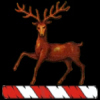Bethlehem Unitarian Church
Turnpike, Newchurch
.jpg)
Bethlehem Unitarian Church (line drawing 1905)
Founded ... ... ... 1806.
Original Church built ... ... 1809.
Second Church built ... ... 1865.
Schoolroom built on site of old Church, 1875.
The Unitarian cause in Rossendale started when the Methodist Conference at Leeds in 1806 expelled the Rev Joseph Cooke from his ministry, which was based in Rochdale and extended north as far as Newchurch. A considerable number of the Rochdale congregation were dissatisfied with this decision and left the Wesleyans to built their own church, inviting Mr Cooke to be the minister. At the same time, the Newchurch congregation, lead by local preacher John Ashworth, asked Mr Cooke to preach to them and started a second congregation for the new movement. The Newchurch group held regular services in local rooms, with John Ashworth leading them and they interchanged their preachers with those from Rochdale and Padiham. Soon the rooms became to small for them and though they had little money the leaders decided to build a chapel, which was opened on the first Sunday in January 1809. The movement at Newchurch was lead by "Parson Ashworth" as he was called, until 1852 when he died at the age of seventy-two. As the "Cause" continued to flourish it was felt necessary to build a larger chapel and this was opened on Good Friday 1865 on ground at the side of the old chapel.
In 1875 a new school was built on the site of the old chapel. The second chapel continued to be used for over one hundred and twenty years until the cost of its upkeep and repair became to great, and services were moved into the Sunday School in 1985 and the Chapel was eventually demolished in April 1987. The Sunday School was used for services until 2004, when, with attendances falling into single figures it was decided to finally close the doors.
------------------------------
The passage below in an extract from
"Historical Sketch Of The North And East Lancashire Unitarian Mission And Its Affiliated Churches 1859 - 1909"
Published 1909
BETHLEHEM Chapel! Bethlehem! What an old-world name for a modern Unitarian church. And the names of some of these old people, and on the gravestones in the beautifully situated chapelyard - Joshua, Elijah, Emanuel, Eleazar, Manasseh, Rachel, Leah, Ruth, Esther, Susannah, Martha. And the old dramatic plays which on New Year's Day enthralled the pious imagination, and still remain unrivalled in the minds of the older people among us - "Joseph and his Brethren," "David and Goliath," "Moses in the Bulrushes." And the village orchestra with its selections from the old masters at the annual sermons - "The Messiah," "Elijah," "Judas Maccabeus." Everything seems to smack of the Bible. Truly they were a people of one Book. These names are the relics of a God-fearing, Scripture-loving village people to whom the Bible was the never failing source of literary as well as religious inspiration. It was in this ferventBible loving spirit that Bethlehem Chapel was born. We cannot and we would not even if we could forget that these early Methodist Unitarians in the Rossendale Valley were a pious, Bible loving people. The times and the manners have changed, yet the odour, of the old-world sanctities still hangs around the church and the Methodist fervour still glows in the features of the venerable saints who are one by one passing into the beyond.
The present generation has been born just in time to catch a glimpse of the "simple pieties" of an older generation ere they pass for ever out of sight. Hidden away in the hills of Lancashire and within sight of the spot where tradition says the Lancashire witches held their revels, these pioneers of religious freedom at the beginning of last century fought their way out of Methodism into Unitarianism.
How was it done? No Unitarian van had passed that way. No Postal Mission had scattered its "heretical" leaflets into the peaceful valley. These simple people did not even know of the existence of Unitarianism. No; the road by which they arrived was characteristic of the people. They fought their way as it were upon their knees and with the Bible in their hands. By prayerful, diligent study of the Scriptures they were guided on their perilous way, and with no idea that there was anybody on the road but themselves. Glad was their surprise and great their joy, when at a sudden turn in the road they fell in with a goodly company of pilgrims whose steps were turned in the same direction as their own. These pilgrims of the open way bore a name that was strange to them, but encouraged by their gladsome speech and friendly assistance, they drew close together and began to march in the company of their newly-found friends under the "banner with the strange device" of Methodist Unitarian.
Ere this happy meeting took place, however, the leader of the little hand had fallen by the wayside. Joseph Cooke, a young Methodist minister in the Rochdale circuit, by force of circumstances as well as by natural gifts, had been from the first the accepted leader of the little company. Expelled for a mild heresy -if it were a heresy - by the Wesleyan Conference, in 1806 a number of devoted followers went with him out into the open road.
In an incredibly short time a church had been formed at Rochdale, one at Newchurch, and another at Todmorden. Their leader's early death in 1811 was a great shock to the infant churches, but these sturdy hillside children were not easily daunted. They had learned the invaluable lesson that no one man is absolutely necessary in any good cause, and they proceeded to make new plans.
At Newchurch the leader's mantle fell upon an enthusiastic disciple, and John Ashworth stepped into the place of the "lost leader". His portrait hangs in the schoolroom at Newchurch - a homely, honest, truth-seeking man he seems with his old-fashioned silver spectacles in his hand. It would be interesting to be able to look through Parson Ashworth's "specs" on that old-fashioned world of 60 or 70 years ago. A man who gave his life for them without hope of any pecuniary reward must have seen something very beautiful in bis little flock. If these silent lips could speak, what a story he might tell transfigured in the light of eternity, of the toils and struggles, the hopes and ambitions, the yearnings and prayers of long ago. Perhaps someday we shall listen to his story.
Before he passed away at the age of 72, he had laid the foundation deep and secure of a church that has never looked backward. Among the ministers who have followed him in the pastorate have been able and gifted men, but their task has been simply to build on the foundation laid by Joseph Cooke and John Ashworth - a task nobly fulfilled.

_small.jpg)
_small.jpg)
_small.jpg)
_small.jpg)
_small.jpg)

.jpg)
